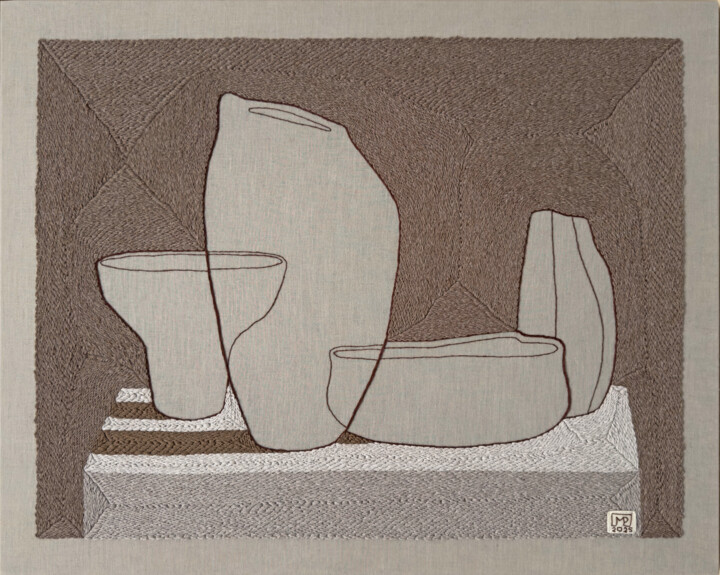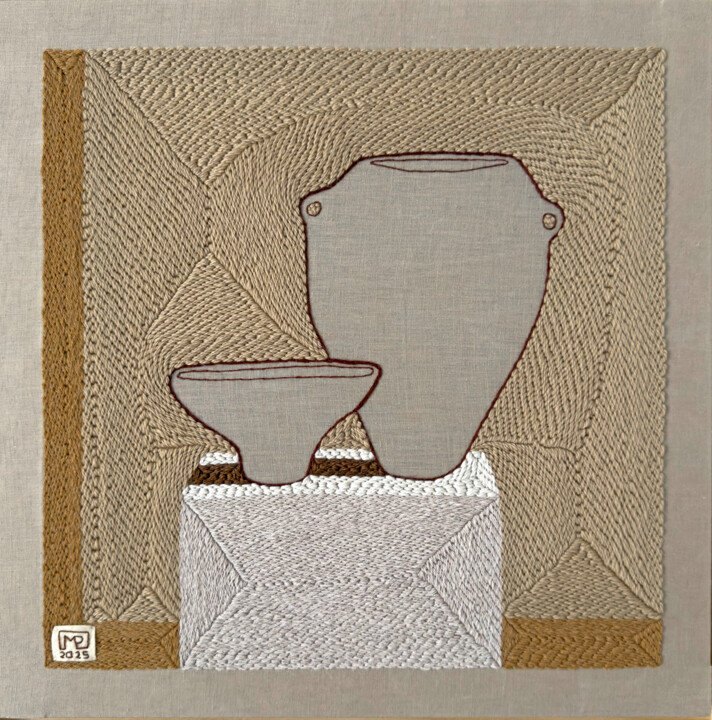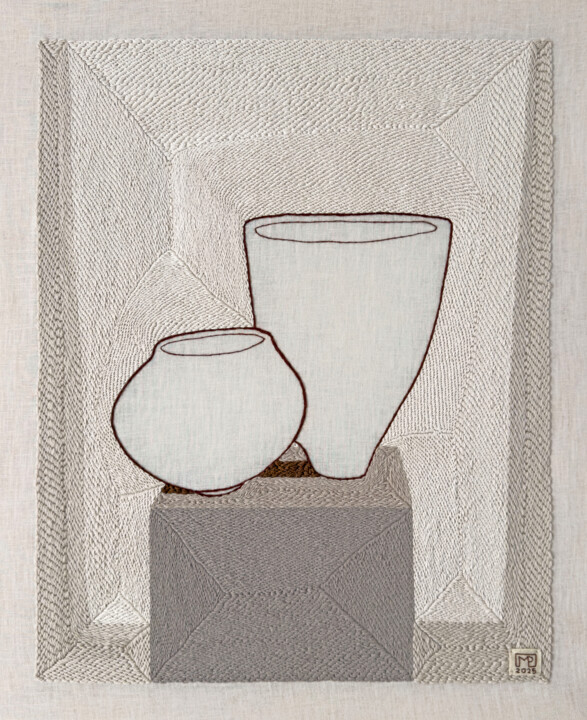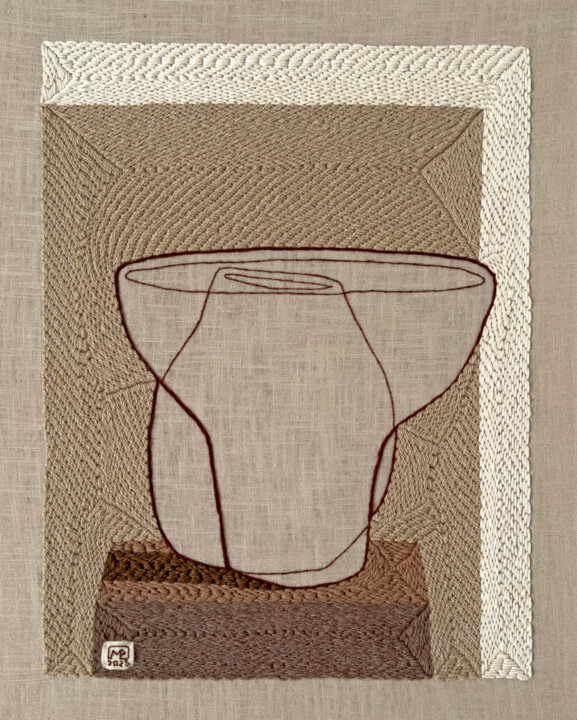What inspired you to create art and become an artist? (events, feelings, experiences...)
Creativity has always been one of the main traits of my personality. I looked for beauty in everything around me. After attending art high school, I chose to study art history at university. The constant contact with art helped me develop many skills. During my university years, I learned how to build visual arguments and, most importantly, trained my eyes to adopt a critical perspective. This experience greatly contributed to my artistic development later on, as it allowed me to broaden my perception of reality and enhance my visual analysis.
What is your artistic background, and what techniques and materials have you experimented with so far?
During art high school, I learned to paint, draw, and sculpt with clay. At university, I expanded this practical knowledge by studying the theoretical aspects of art and its reception. However, throughout these years, I couldn’t find a creative form that fully expressed me. One day, without high expectations about the outcome, I decided to embroider one of my sketched compositions directly onto the canvas instead of painting it. The embroidery process itself turned out to be a very relaxing and fascinating experience. I completely lost myself in it. Moreover, seeing how visually satisfying the finished work was to me, I immediately realized I had found something special.
What are the 3 aspects that set you apart from other artists, making your work unique?
It’s hard for me to choose because every artist is unique in their own way. I am deeply convinced that the art you create, beyond the messages you want to convey, should also speak about you. I strive to find harmony by focusing on exploring color, form, and composition in the search for beauty. Through tangible materials, I also aim to express intangible emotions such as memories, dreams, and silence. I am a very sensitive person, somewhat reserved but at the same time open to the beauty of this world. I hope my art reflects this vision—how I see myself in the world and how I want to present it to others.
Where does your inspiration come from?
Lately, I feel very inspired by modern design objects and contemporary ceramic works. I’ve found a common ground in them with my own exploration of lines, shapes, composition, and textures. I am deeply drawn to the idea of merging art with modern design, creating objects that carry the soul of a work of art.
What is your artistic approach? What visions, sensations, or feelings do you aim to evoke in the viewer?
Anish Kapoor once said, “Art inspires and guides the poetic in us.” I completely relate to this statement. My works evoke a beauty that is sometimes poetic and immaterial—a poetry of silence. I firmly believe that when you create art, you must reflect yourself in it. Every artwork should tell the story of its creator. Only in this way can we create something authentic and genuine that resonates with viewers. It is the strength and authenticity of our expression that captures their imagination and forms the basis of their emotional attachment.
This is important to me because I know that it will be my collectors, not me, who will live with my works. And living with something requires an emotional connection. The things we surround ourselves with matter to us because they reveal something about who we are.
What is the process behind creating your artworks? Is it spontaneous or the result of a long preparatory process (technical, inspired by art classics, or something else)?
I usually start with a drawing. I make many sketches in my notebook, trying to put the idea of the composition I have in mind onto paper. Finding the perfect lines and shapes is usually intuitive for me. I know the composition is good and complete when I see it and don’t feel the need to change anything. As I mentioned before, the critical eye I developed during my years in art school and university helps a lot in this process.
Once the composition is ready, I transfer the drawing onto linen or cotton canvas so I can clearly see where the embroidered sections should be and which areas should remain untouched. The foundation of my work lies in this contrast between fullness and emptiness. While creating the initial linear embroidery of the composition, I focus mainly on the expressiveness of the line, varying its thickness. For the rest of the embroidery, I mostly choose neutral colors to emphasize the harmony of the composition. Every element should harmonize with the others, guiding the viewer toward visual contemplation.
Do you use a specific working technique? If so, can you explain it to me?
I create all my embroideries using the punch needle technique. I enjoy experimenting with this medium and exploring the visual effects it can produce. I have always been fascinated by lines, flat surfaces within a composition, and their interactions, which often lead to a perception of the image that feels more abstract than real. It’s a form of reality that serves as a starting point to capture something elusive, close to abstraction.
Are there any innovative aspects in your work? Can you tell us about them?
Textile art has played a role in crafting practical and decorative objects made by humans for hundreds of thousands of years. Before Anni Albers (a 20th-century textile artist), weaving was considered merely a craft, but she helped transform it into an art form—one that can be both beautiful and functional. Like all forms of art, textile art continues to reinvent itself, offering countless opportunities for self-expression while also preserving many valuable textile traditions. The fusion of tradition with personal experience shapes the future of this art, providing not only a sense of belonging to something greater but also leaving space for innovation.
Is there a format or medium you feel most comfortable with? If so, why?
I use natural materials to create my works, such as alpaca and cotton yarns, because they offer the highest quality both aesthetically and sensorially. I want my collectors to engage with a truly high-quality product. The softness of alpaca, contrasted with the rougher nature of wool and cotton, creates dynamic relationships on the canvas. One of the most interesting aspects of yarn is its warmth and tactile quality. My works require human interaction to fully appreciate what makes them valuable.
Where do you create your works? At home, in a shared studio, or in your own workshop? And in this space, how do you organize your creative work?
I work exclusively from home. One of the many advantages of embroidery is that it’s a “clean” technique that doesn’t create too much chaos in your living space.
Does your work require you to travel to meet new collectors, attend fairs, or exhibitions? If so, what do you gain from these experiences?
Honestly, no. Although all my collectors are international, they’ve mostly discovered my work through online art galleries or social media.
How do you envision the evolution of your work and your artistic career in the future?
I have big dreams for my artistic career, just like any aspiring artist who understands the value of their work. If you want to pursue a career in the creative world, you need to be confident in what you offer. There are as many talented artists as there are collectors willing to invest in your art. But for that to happen, they need to receive something unique from you—something no one else can give them, something that will evoke a reaction in them, whatever that may be.
What is the theme, style, or technique of your latest artistic production?
My paintings do not depict real objects; they are not typical still lifes. They are primarily an exploration of form that encapsulates the interdependence of lines and surfaces. What matters is not the individual object but the composition as a whole. This form is simplified to minimalism because simplicity is the most sincere form of expression.
If you could have created a famous artwork from art history, which one would you choose? And why?
I would say none. :) As I mentioned before, every single artwork must speak about its creator. That’s what makes it unique and unrepeatable. Choosing one would mean taking it out of its context, and we don’t admire artworks solely for what they depict on the canvas but also for what gives them deeper meaning—and that is the mind of the artist.
If you could invite a famous artist (living or dead) to dinner, who would it be? How would you suggest spending the evening?
Sarah Ball. But instead of inviting her to dinner, I would prefer to ask her to spend time in her studio, watching her work and silently dreaming of being portrayed in one of her pieces. In my opinion, she is one of the few contemporary artists capable of capturing the soul.

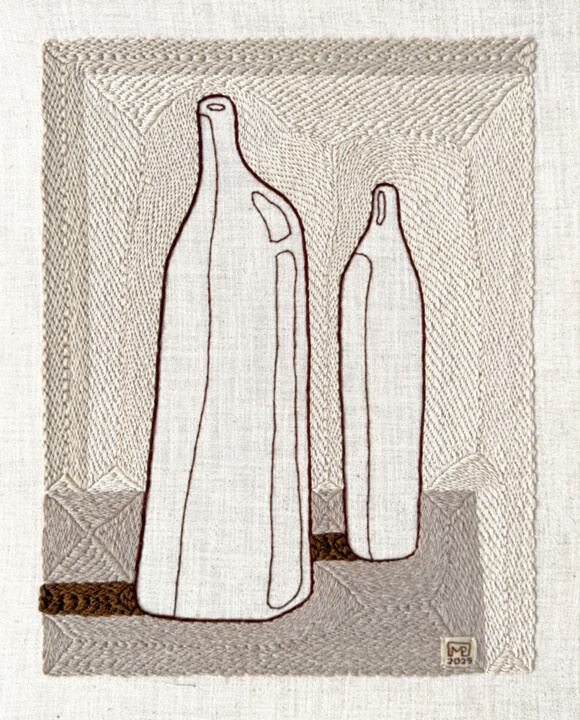
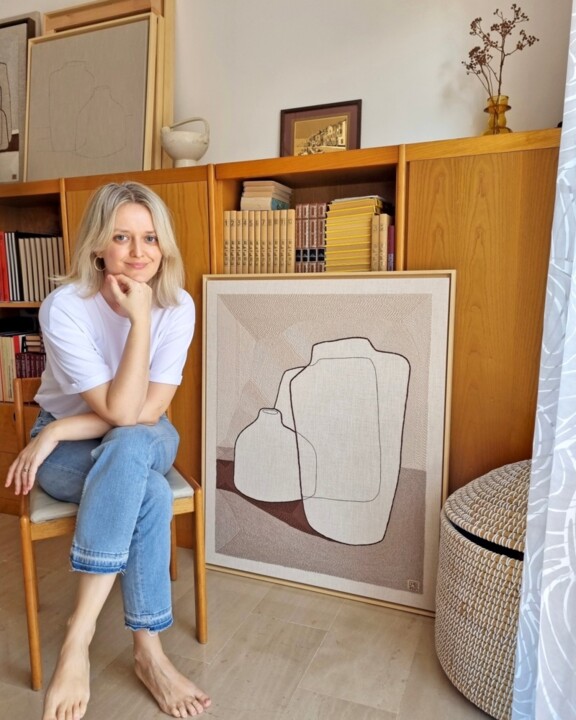

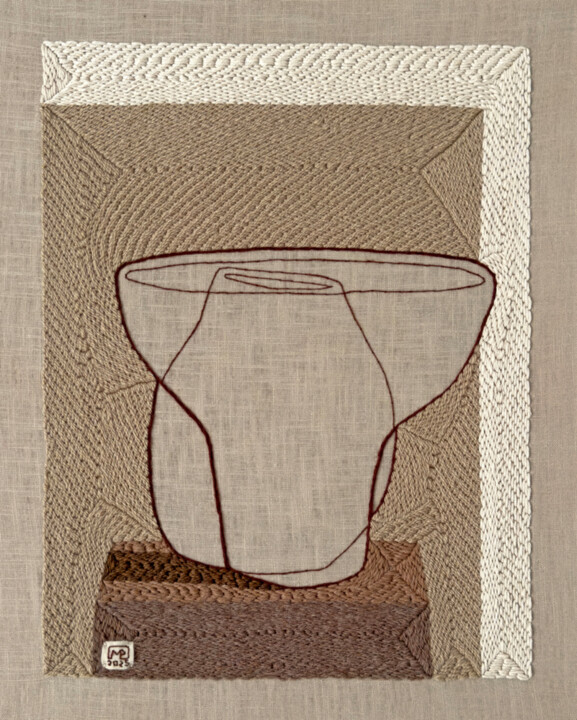

 Olimpia Gaia Martinelli
Olimpia Gaia Martinelli







